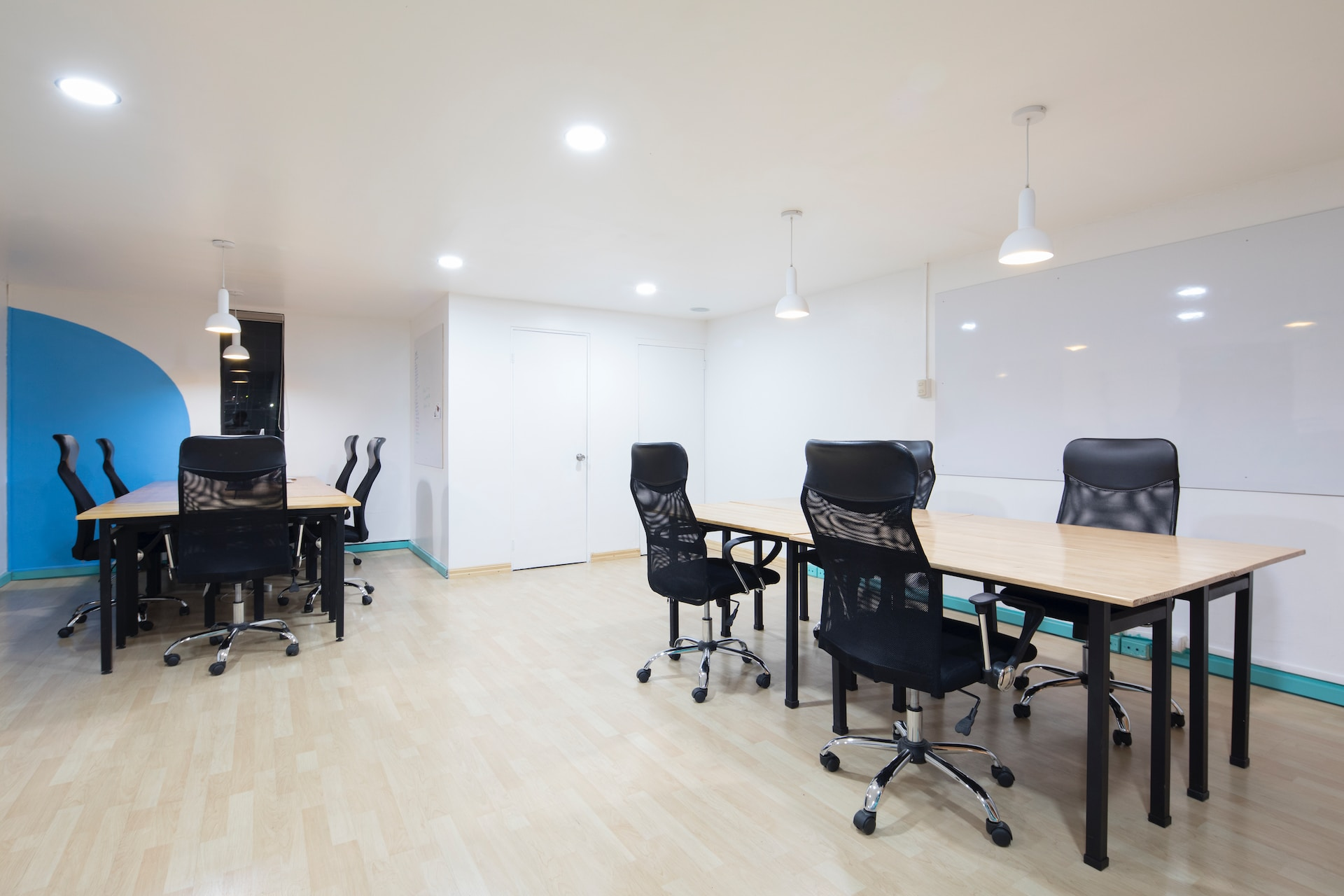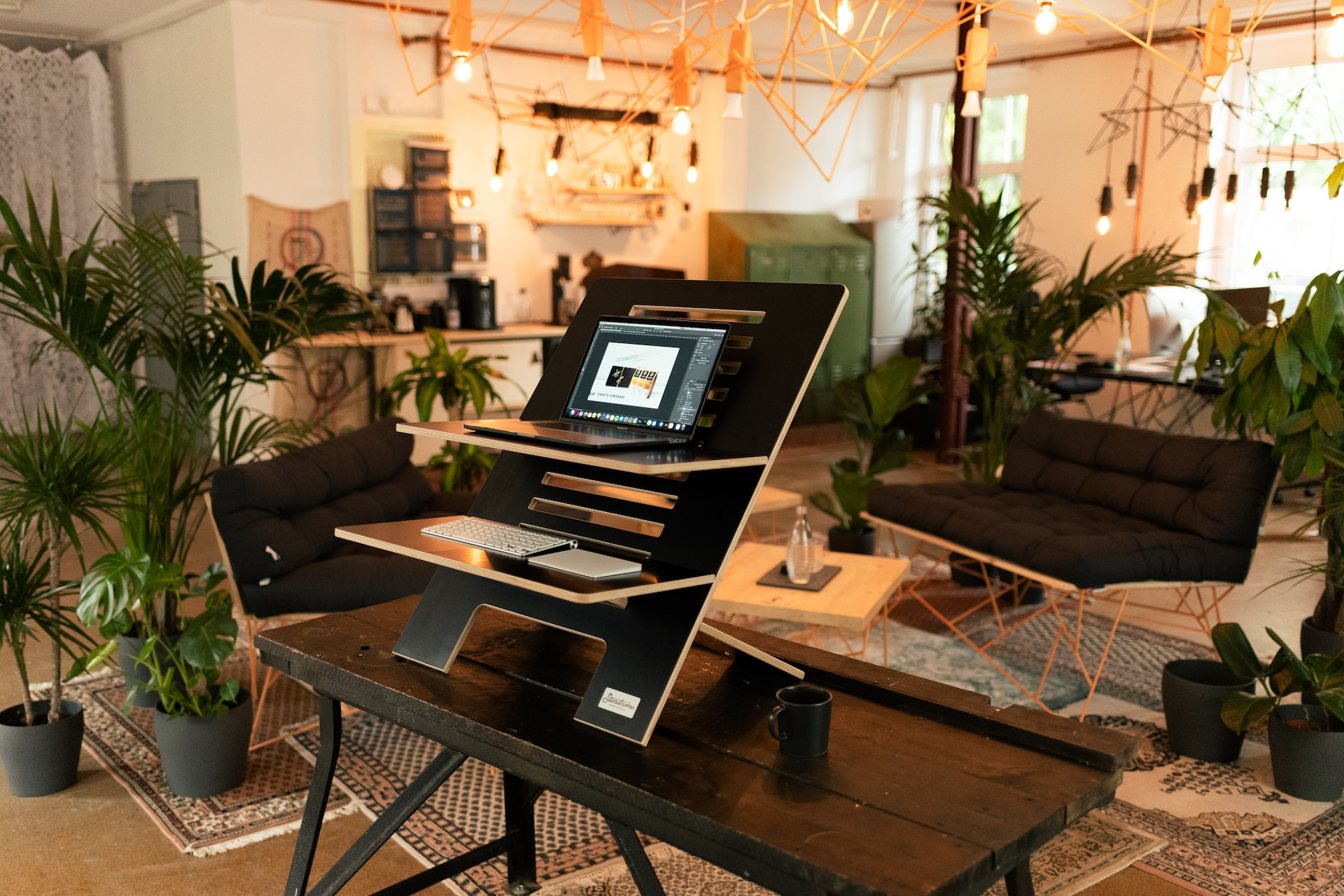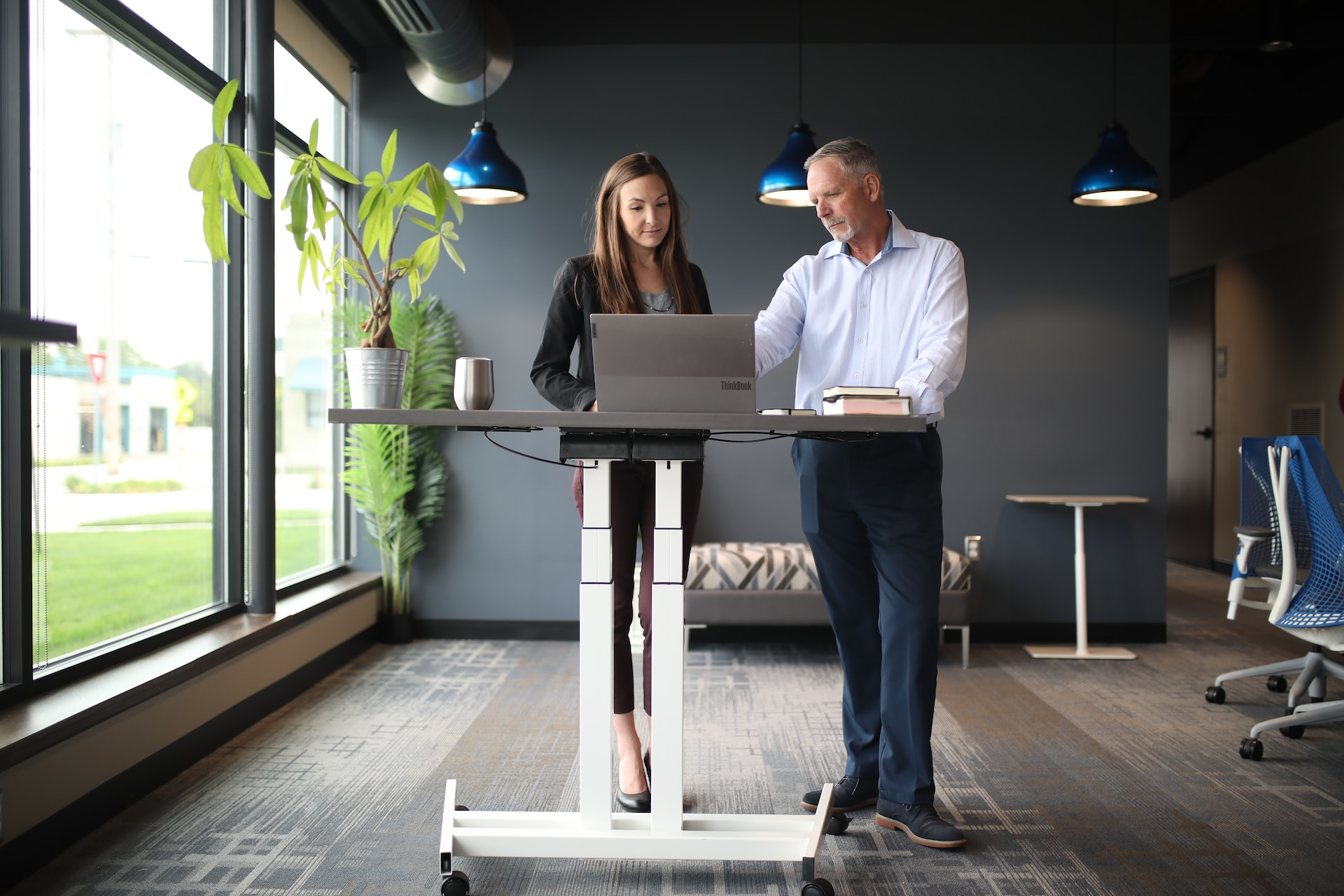After years of slouching at a workstation, you'll experience the aches resulting from a poorly organized workspace lacking ergonomic elements.
Ergonomic furniture is defined as items that have been specifically created to facilitate the reduction of fatigue and the maintenance of health. When it comes to cutting-edge furnishings, an ergonomic table certainly doesn't come last. The ability to electronically modify the height of the tables is what gives it its distinctive character. This allows the user to switch between working while sitting and standing.
The ergonomic workstation is ideal for those who perform routine office tasks or freelancers working from home for extended periods. You can transfer the load to different muscle groups and lessen tiredness by shifting the body's position throughout your working day and modifying the ergonomic table height. Using such a table can improve blood flow and reduce back pain risk.
If you're looking for an ergonomic table for your home office but need help with what to look for, this guide is certainly for you.
Let's dive right in!
Understanding the Key Elements of an Ergonomic Home Office Setup
-
Ergonomic Office Chair

Relax and settle into your chair. Does your lower and middle back feel supported when you lean against the backrest, or does your spine feel strained? The finest chairs for working at a desk conform to the S-curve of your spine, while not leaving you feeling like you're perched on a stump against a wall. According to Alan Hedge, an ergonomics expert at Cornell University, lumbar support is necessary when your chair lacks support for your lower back.
If you aren't interested in spending the money on a new chair right now, make even a hard, unpadded chair more bearable by cushioning the seat and adding a lumbar support pillow.
-
Ergonomic Desk
To decrease strain, your arms and wrists should be neutral when operating at your desk: parallel to the floor or tilted toward your lap. However, most desks are around 28 and 30 inches high, which works well for people 5 feet 10 inches or taller but makes it difficult for the average adult to hold their arms at a comfortable working height.
There are a few ways to deal with this problem. Adjust the height of your chair or install a keyboard tray beneath your desk to bring the keyboard to a more comfortable level for your hands. Nevertheless, you'll require a footrest to support your limbs and feet.
-
Ergonomic Keyboard and Mouse
Fully divided keyboards are the most adaptable. They allow you to keep your hands at a comfortable distance from one another while typing, reducing strain on your shoulders. A split keyboard requires a high learning curve, so start with a partially split keyboard until you get the hang of it.
Similar to how continuous typing can wear you out or hurt, repeatedly using your laptop's trackpad or a regular mouse can strain the muscles in your fingers and wrists.
A mouse that is easy to hold and control is a must-have for most computer users. If employing a mouse makes your wrists sore or painful, think about switching to an input device that requires less precise wrist motions, like a trackball or a pen with a graphics tablet.
-
Monitor Placement

Make sure that you don't have to squint or tilt your head to see what's on the screen of your computer or laptop. It will cause fatigue and eye strain. Set your monitor so that your eye level is 2–3 inches under the top of the screen, and stand a comfortable distance from the screen (around arm's length). But think about a laptop stand if you want more stability and accurate control of the position of your display.
-
Lighting and Eye Strain
Ergonomics professionals recommend good lighting to prevent neck strain and headaches. Natural light brings benefits to the workplace, including increased productivity, less eye strain, and improved mood.
Muscle tension is a typical response to stress that can hinder performance on the job and lead to further anxiety and stress. So make sure your home office has relax-promoting items. Among these objects are:
-
Aromatherapy diffuser
-
An indoor plant
-
headphones with noise cancellation
Importance of Taking Breaks and Stretching
When working from home, getting up and moving about periodically is the most beneficial activity you can perform with your body.
An example of a productive break is:
-
Taking a quick stroll in the neighbourhood
-
Doing a little yoga and meditation
To avoid potential health problems from prolonged sitting or standing, it's a good idea to set an alarm to remind you to get up and move around every hour.
How to Set Up an Ergonomic Workstation at Home

-
Make Sure the Computer Screen is at Eye Level
Proper working posture is crucial to avoiding neck, shoulder, and back injuries. Many people have the terrible habit of working on their lap or another surface that isn't high enough, which causes strain on the neck and shoulders.
To reduce strain on your head and neck, position your laptop or desktop device at eye level using household items like cartons or books. Maintaining a neutral position of your head and neck will be easier if you place your monitor at eye level. It will also make typing with the computer's keys easier, keeping your elbows at a 90-degree angle and your shoulders resting naturally at your sides.
-
Place the Keyboard And Mouse In a Neutral Position for the Wrist Rest
Keeping a neutral hand position is similar to holding your head and neck to reduce tension in those areas. The mouse and keyboard must be easily accessible, ensuring you maintain a straight forearm and hand position. You may need to hunch forward if the distance between you and the keyboard or mouse is too broad. If they're too near, your hands will not align with your forearm and wrist.
You may need to modify your posture if you're working on a laptop instead of a desktop computer with a monitor and keyboard. To avoid neck and back strain when reading, prop the laptop up so that the screen is at eye level and tilt it downward.
-
Tweak Your Chair's Backrest for Optimal Back Support

Maintaining an ergonomic home office doesn't require a pricey office chair, but it does require you to sit or stand in a manner that minimizes strain on your lower back. Reclining completely in your chair is the best way to achieve this position without additional tools. You can position a small pillow at the bottom of your back if you require more lumbar support. This helps you keep your natural spinal curve.
-
Use the Same Approach For Your Standing Desk
-
You must follow the same ergonomic best practices for your standing desk. Since standing places more strain on the body than sitting, it is even more crucial to consider how you arrange your body and equipment while working.
It's crucial to keep your body secure using a readymade standing desk or a DIY desk.
-
Adjust the desk height so that your arms can hang naturally at your sides when working.
-
Bringing the display up to the same level as your eyes
-
Keep your hands and wrists neutral by placing the keyboard and mouse as near together as possible.
-
Changing positions at least once every sixty minutes
Ergonomic Products from Apol Singapore
-
Aevum
APOL's latest offering is the Aevum ergonomic gaming chair. The ultimate seating solution for individuals who place equal importance on form and function, Aevum is the result of a careful synthesis of industry-leading quality and cutting-edge customer-driven technology. Be a part of the select few who have found the pinnacle of gameplay with Aevum.

-
Behemoth
The Behemoth Series has the largest legroom and the best back support of any of APOL's chair collections. The natural curvature of your spine is supported by the ergonomic design.

-
Izara Wood Levodesk
This height-adjustable LEVODESK desk is the ideal focal point for your workspace. An obsession with detail fuels the Izara Wood Collection, setting the bar for what convertible standing workstations should be: natural, environmentally friendly, and elegant.

-
Rex Stone Levodesk
The Rex Stone LEVODESK will alter your workstation while boosting your efficiency and overall health thanks to its exceptional technology and stunningly stylish design. You know you're getting a high-quality desk when you purchase a LEVODESK.

-
Sphinx
This is the smallest APOL chair to date. However, the Sphinx chair supports every stance and seating position for petite people, whether you like to place your feet flat on the floor or appreciate a moderate rocking motion that promotes blood circulation.

-
Kraken
This chair's ergonomic structure guarantees outstanding comfort and the necessary amount of long-lasting lumbar support, making the Kraken Series the best option for individuals of medium build.

-
Apol Ergonomic Accessories For Desks And Chairs
Apart from the primary products sold by APOL, there are several accessories you could also purchase to boost productivity and comfort. Some of the top APOL accessories you should consider are:
-
Premium footrest
-
Lumbar pillow
-
Nox monitor light bar
-
Neck rest pillow
-
Floor mat with anti-slip base
-
Chair cover
You can purchase these upgrades from APOL for your desks and chair. For the complete list of accessories, you can visit the website today.
Frequently Asked Questions about Ergonomics

What should you do to set up your work area ergonomically?
The three significant ergonomic tips you can take immediately include:
-
Lessen mental strain by minimizing repetition tasks.
-
Adjust sitting and standing positions to reduce the potential for employee burnout.
-
Use suitable devices and equipment to cut down on stress.
What is the most ergonomic height for a desk?
A desk is at the correct height when the keyboard or workspace is at the same level as your forearm. This applies to both the seated and upright positions.
What is conventional desk height?
A typical desk's height can range from 28 to 30 inches. These workstations are suitable for those standing between 5'8" and 5'10". However, not all desk workers are of average height. A more ergonomic table height is necessary for shorter or taller people to ensure their comfort and avoid any potential health issues. Most people can find the optimal ergonomic position at this desk by adjusting from a height of 22 to 33 inches.
What are the different types of ergonomic design?
Ergonomics designs can be divided into organizational, cognitive, and physical. Each of these variables impacts people's interactions with their surroundings in a unique way, which affects how productive they are at work.
What are the three risks that come with ergonomics?

Some people are more likely to acquire an MSD due to risk factors associated with work exertion and ergonomics, making it challenging to balance local soft tissue fatigue and one's capacity to heal from it.
The most critical ergonomic hazards to think about at work are:
-
Extensive task repetition
-
Strenuous exertions
-
Repeated or prolonged awkward postures
How can I work safely from home?
Take care of yourself by maintaining healthy routines both on and off work. While working from home, our bodies and movements may become more sedentary than usual. Make sure to move around while you work by moving about often, and taking periodic breaks from your workstation. You can do your remote job in comfort and safety by bringing your current office equipment from the office into your house.
Conclusion
There is little doubt that ergonomic tables offer several advantages to one's health. In addition to making your workdays easier, it reduces stress and is very intuitive to use. It puts the user's physical and mental well-being above anything else.
Simply put, ergonomic office furniture makes your workplace more comfortable, improving the working atmosphere and boosting efficiency. If you want to enjoy the perks of employing an ergonomic table, consider incorporating it into your home office. It's time to upgrade to some premium ergonomic furniture with APOL.


